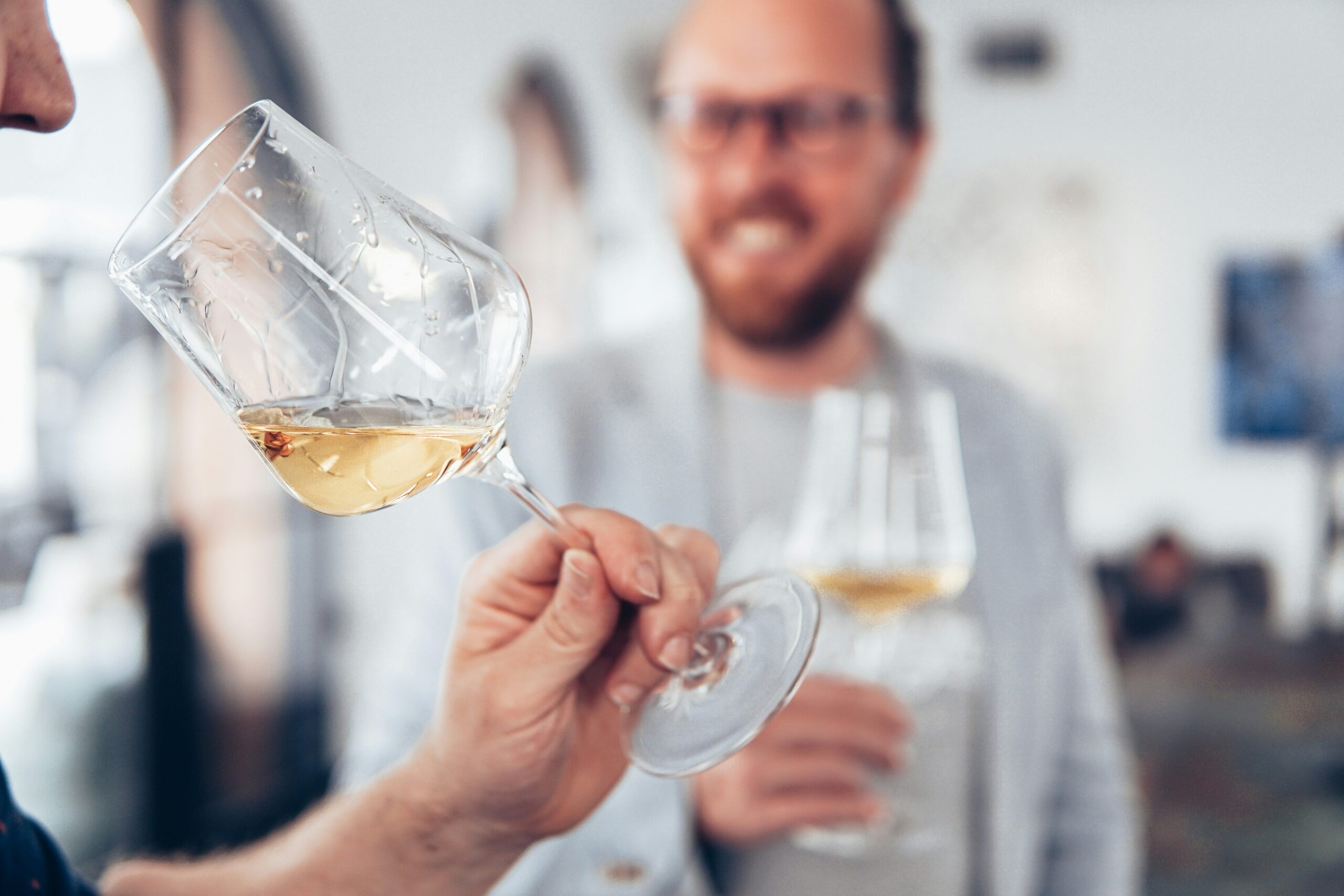
Have you ever felt intimidated by a wine list at a restaurant, or unsure where to begin exploring the world of wines? Wine tastings offer a fantastic opportunity to embark on a guided adventure through flavor profiles, grape varietals, and the art of wine appreciation. But what exactly happens at a wine tasting? Fear not, curious connoisseur! This comprehensive guide will equip you with all the knowledge you need to navigate a wine tasting with confidence and enjoyment.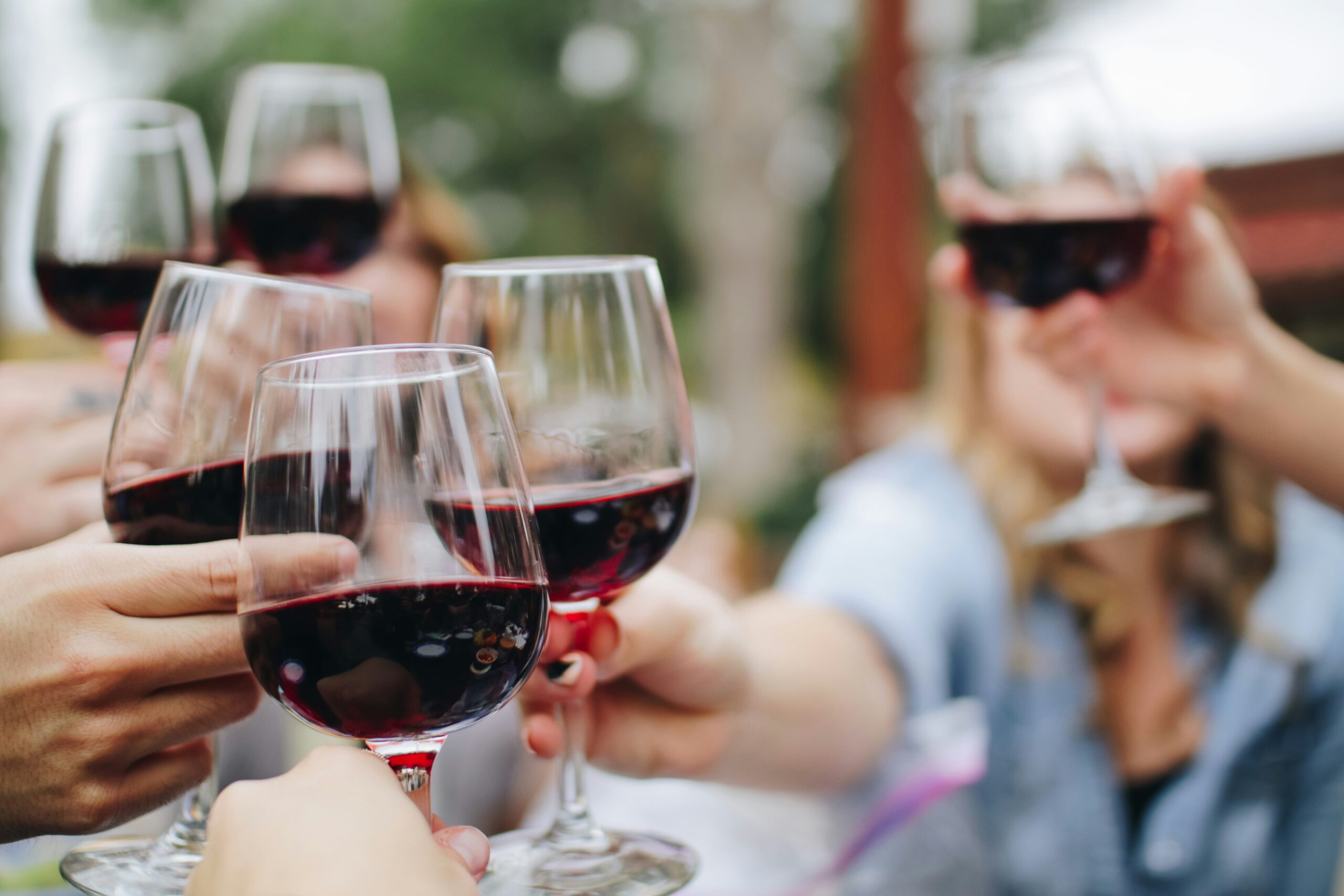
The Art of Tasting: A Sensory Symphony
Wine appreciation transcends mere drinking; it’s a captivating dance between your senses, each movement revealing a hidden layer of the wine’s personality. Let’s delve into the steps that transform a simple sip into a symphony of discovery:
See: Unveiling the Visual Story
Before the first tantalizing aroma reaches your nose, the wine presents its visual narrative. Hold your glass against a white or light-colored background. Tilt it slightly to allow light to pass through the liquid. Here’s what the color can tell you:
- Reds: Young red wines often display vibrant hues of ruby or purple, hinting at a youthful fruitiness. As they mature, they evolve to deeper tones of garnet or brick red, suggesting more developed characteristics.
- Whites: Pale yellows and greenish tinges might indicate a young white wine, while a richer golden hue could suggest oak aging or a fuller-bodied style.
- Sparkling Wines: The intensity of bubbles can offer clues. Finer, persistent bubbles often point to a higher-quality sparkling wine produced using the traditional “méthode champenoise” method.
Swirl: Awakening the Fragrant Essence
Now comes the act of swirling. Gently rotate the wine in your glass by holding the stem. This simple motion serves two key purposes:
- Aroma Release: As the wine swirls, it comes into contact with a larger surface area, releasing its volatile aromatic compounds. These rise and meet your nose, allowing you to better perceive the wine’s bouquet.
- Coating the Glass: The swirling motion also helps evenly coat the inner surface of the glass with a thin film of wine. This maximizes the surface area exposed to air, further enhancing the release of aromas.
Smell: Decoding the Aromatic Language
With the wine swirled, take a deep sniff from the rim of the glass. Close your eyes for a moment and focus solely on the aromas that reach your nose. Here’s how to approach this olfactory exploration:
- The Initial Burst: Upon your first sniff, you’ll likely encounter the most prominent aromas. These are typically youthful and fruit-forward, such as cherry, blackberry, or citrus notes.
- Delving Deeper: Take a second, deeper sniff. This allows you to detect more subtle and complex aromas that may emerge. These could include floral notes like violets or roses, herbal hints like thyme or rosemary, or even earthy characteristics such as mushroom or leather.
- Identifying Aromas: Don’t be discouraged if you can’t immediately pinpoint specific aromas. As your experience grows, you’ll develop a richer vocabulary to describe the nuances you encounter. Common descriptors include primary (fruit-forward), secondary (derived from fermentation), and tertiary (arising from aging).
Sip and Savor: A Dance on the Palate
Now comes the moment of truth – the first sip. Take a small amount of wine into your mouth and hold it there for a few seconds. Don’t swallow immediately; instead, embark on a journey across your palate:
- Sweetness or Dryness: Notice whether the wine presents a sweet sensation or a drying effect on your tongue. This is primarily influenced by the residual sugar content left after fermentation.
- Acidity: Pay attention to the tingling sensation on the sides of your tongue. Acidity provides a refreshing backbone to wines and balances out sweetness or bitterness.
- Tannins: If you’re tasting a red wine, you might experience a drying or slightly astringent sensation on your gums and tongue. This is caused by tannins, naturally occurring compounds in grape skins and seeds. The level of tannins varies depending on the grape varietal and the winemaking process.
- Body: Assess the weight and texture of the wine in your mouth. Lighter-bodied wines feel more like water, while full-bodied wines have a richer, almost creamy mouthfeel.
- Flavor Evolution: As you hold the wine in your mouth, swish it gently to coat all surfaces. Notice how the flavors develop and change over time. New notes may emerge, and existing ones might become more prominent.
- The Aftertaste: Finally, swallow the wine and pay attention to the lingering taste sensation, also known as the aftertaste. This can provide clues about the wine’s complexity and length of finish.

The Role of the Host: Your Sommelier for the Day
A skilled wine tasting host is like your personal sommelier for the afternoon, guiding you through a captivating exploration of flavor and discovery. Their expertise elevates the experience, transforming a simple tasting into an educational journey. Let’s delve deeper into the key roles a host plays:
Setting the Stage for Enjoyment: Welcome and Introduction
A warm and welcoming introduction sets the tone for the entire tasting. Here’s what you can expect from your host:
- Greeting and Introductions: The host will greet you with a smile and introduce themselves. They may also introduce any other staff participating in the tasting.
- Overview of the Tasting Format: The host will provide a brief explanation of the tasting format, outlining the number of wines you’ll be exploring, the order of presentation, and any specific themes or focuses.
- Expectations and Etiquette: A good host will subtly guide you through proper tasting etiquette. This might include things like holding the glass by the stem, spitting in designated containers if provided, and taking small sips for optimal appreciation.
Unveiling the Wines: A Journey Through Winemaking
Before the tasting commences, the host will introduce each wine, providing a wealth of knowledge to enhance your experience:
- Grape Varietals and Origins: Learn about the grape varietals used to create the wine, where the grapes were grown, and any significant aspects of the region’s climate or terroir.
- Winemaking Techniques: The host might delve into the winemaking process used for each wine. This could involve details about fermentation styles, oak aging practices, or unique techniques employed by the winery.
- Vintage Information: The vintage (year the grapes were harvested) plays a crucial role in a wine’s character. The host will explain the significance of the vintage year and how it might have influenced the wine’s style.
Conducting the Tasting: Demystifying the Senses
Now comes the heart of the experience – the tasting itself. Here’s how the host facilitates your exploration:
- Guiding the “See, Swirl, Smell, Sip, Savor” Process: A skilled host will guide you through each stage of the tasting, highlighting key elements to focus on with each wine. They might offer prompts to encourage you to notice specific colors, aromas, or flavor profiles.
- Highlighting Key Characteristics: The host will point out the most prominent features of each wine, drawing attention to its balance, acidity, tannins (for reds), and overall complexity.
- Food Pairing Insights: If the tasting features food pairings, the host will explain how the chosen dishes complement the wines. They might discuss how the food enhances particular flavor notes or textures in the wine.
Fostering Engagement: A Space for Discussion and Learning
Beyond simply providing information, a good host fosters a comfortable environment for discussion and learning:
- Encouraging Questions: The host should actively encourage you to ask questions about the wines, the winery, or anything related to the world of wine in general.
- Addressing Curiosity: No question is too basic! A skilled host will answer your inquiries with enthusiasm and clarity, ensuring you leave with a deeper understanding and appreciation for wine.
- Interactive Discussions: The host might engage the entire group in discussions, prompting comparisons between wines or inviting participants to share their observations and preferences.
Beyond the Basics: Traits of a Stellar Host
A truly exceptional host elevates the experience even further:
- Passion for Wine: Look for a host who exudes a genuine passion for wine. Their enthusiasm is contagious and adds an element of excitement to the tasting.
- Storytelling Ability: The best hosts weave a narrative around the wines, connecting them to the winery’s history, the terroir, and the winemaking philosophy.
- Adaptability and Inclusivity: An excellent host can adapt their approach to suit the audience’s level of expertise. They ensure everyone feels included and comfortable participating in the discussion.
Setting the Stage: Where Wine Tastings Take Place
Wine tastings can be gateways to a world of flavor exploration and discovery. But before you embark on this sensory journey, the setting itself plays a crucial role in shaping the experience. Here, we’ll delve into the diverse locations where wine tastings unfold, each offering its own unique charm and atmosphere:
Wineries: A Journey to the Source
The quintessential wine tasting experience lies within the beating heart of winemaking itself – the winery. Nestled amidst sprawling vineyards bathed in sunshine, a winery tasting offers an immersive introduction to the world of wine.
- Ambiance: Imagine yourself surrounded by rows of meticulously tended grapevines, the air buzzing with the gentle hum of activity. The tasting room itself could be a rustic haven with exposed brick walls and wooden beams, or a sleek, modern space showcasing stunning vineyard views.
- Focus: Winery tastings often highlight the winery’s philosophy and signature style. Expect to sample a selection of their wines, from their introductory offerings to their prized reserves. The host will likely provide insights into the grape varietals grown on their estate, the terroir (the unique combination of soil, climate, and topography) that influences their wines, and the specific winemaking techniques employed.
- Benefits: Beyond the tasting itself, winery tours are often available, offering a behind-the-scenes look at the intricate process of transforming grapes into wine. You might witness the crushing and fermentation stages, learn about barrel aging techniques, and gain a deeper appreciation for the craftsmanship involved.
Wine Bars and Restaurants: Curated Explorations
Wine bars and restaurants offer a more social and casual setting for wine tastings. Here, tastings are often designed around specific themes or regions, allowing you to explore a focused selection:
- Theme-Based Tastings: These might explore a specific grape varietal (a vertical tasting of Pinot Noir from different vintages) or a regional focus (a journey through the diverse wines of Tuscany).
- Pairing Menus: Some restaurants curate tasting flights specifically designed to complement a multi-course meal. This allows you to experience how the interaction between food and wine elevates both flavors.
- Ambiance: Wine bars often have a vibrant atmosphere, perfect for a night out with friends. Restaurants, on the other hand, might offer a more intimate setting conducive to focused discussion and enjoyment of the wines.
- Benefits: Wine bar and restaurant tastings often cater to a wider audience, offering flights at various price points. This allows beginners to dip their toes into the world of wine without a significant investment. Additionally, the staff’s expertise can be invaluable, offering recommendations based on your preferences and guiding you through the tasting experience.
Retail Stores: A Beginner’s Gateway
Liquor stores are increasingly hosting introductory wine tastings, providing a convenient and accessible entry point for beginners.
- Focus: These tastings often focus on familiarizing participants with basic wine styles (red, white, sparkling) and grape varietals. They might also introduce participants to wine terminology and the “See, Swirl, Smell, Sip, Savor” tasting method.
- Benefits: Retail store tastings are typically casual and affordable, making them a low-pressure environment to learn the ropes. They offer a chance to experiment with different wines before purchasing a full bottle. Additionally, store staff can answer your questions and offer recommendations based on your newfound preferences.
 Beyond the Basics: Embracing Diverse Tasting Formats
Beyond the Basics: Embracing Diverse Tasting Formats
The beauty of wine tastings lies in their versatility. While the core sensory exploration remains constant, the format and focus can vary, offering unique ways to delve deeper into the world of wine. Here, we explore some of the most common variations:
Blind Tasting: A Challenge for the Palate
In a blind tasting, the ultimate test of your sensory skills awaits. Here’s what you can expect:
- Veiled Bottles: The identity of the wines is hidden, typically by opaque bags or sleeves. This eliminates any preconceived notions based on label or reputation, forcing you to rely solely on your senses to discern the wine’s characteristics.
- Focus on Sensory Analysis: The emphasis shifts away from identifying specific grape varietals or regions. Instead, you’ll focus on deciphering the wine’s color, aroma profile, flavor profile, and overall balance through meticulous tasting and discussion.
- Developing Your Palate: Blind tastings are excellent tools for sharpening your palate and refining your ability to identify sensory cues. They challenge you to move beyond labels and truly engage with the wine itself.
- A Collaborative Approach: Blind tastings often encourage a more collaborative atmosphere. Participants share their observations and compare notes, fostering a learning environment where everyone can contribute and grow their knowledge.
Pro Tip: Don’t be discouraged if you can’t pinpoint the exact grape varietal or region during a blind tasting. Focus on identifying key characteristics like fruit notes, acidity levels, and tannins (for reds). Even educated guesses can be valuable learning experiences.
Vertical Tasting: A Journey Through Time
A vertical tasting offers a captivating exploration of how a single wine evolves over time. Here’s the experience you’ll encounter:
- Focus on a Single Wine: You’ll sample several vintages of the same wine, typically presented from youngest to oldest. This allows you to observe how the wine transforms over the years.
- Aging Potential: As wines mature, their characteristics undergo a fascinating metamorphosis. Younger vintages might exhibit vibrant fruit flavors and higher acidity. With age, these elements soften, giving way to more complex notes of leather, spice, or earth.
- Understanding the Impact of Vintage: Vertical tastings highlight the influence of the vintage year on a wine’s character. Factors like weather patterns during grape growing can significantly impact the final product.
- Appreciating the Art of Winemaking: By experiencing a wine’s evolution, you gain a deeper appreciation for the winemaker’s skills and decisions involved in crafting different styles for each vintage.
Pro Tip: Pay attention to how the color develops with age. Younger wines typically have deeper, richer hues, while older wines might show signs of bricking (red wines) or browning (white wines) at the edges.
Horizontal Tasting: A Celebration of Diversity
A horizontal tasting offers a delightful opportunity to compare and contrast wines from the same vintage but different grape varietals or regions. Here’s what you can expect:
- Exploring Varietal Expressions: You’ll experience how different grape varietals, even from the same vintage and region, can produce distinctly different wines. For instance, a horizontal tasting of Cabernet Sauvignon, Merlot, and Pinot Noir will showcase the unique flavor profiles associated with each grape.
- Understanding Terroir: If the wines are from various regions, you’ll observe how the influence of terroir (soil, climate, and topography) shapes the final product. Wines from cooler climates might be lighter-bodied with pronounced acidity, while those from warmer climates tend to be richer and more full-bodied.
- Identifying Regional Styles: Horizontal tastings allow you to appreciate the characteristic styles associated with specific wine regions. For example, you might compare a French Chardonnay known for its minerality to a Californian Chardonnay known for its bold, fruit-forward character.
Pro Tip: Pay attention to the subtle differences in aroma profile. For instance, Cabernet Sauvignon might exhibit aromas of blackcurrant and cassis, while Merlot might lean towards plum and black cherry notes.
Food Pairing: A Symphony of Flavor
Some tastings delve into the enchanting world of food and wine pairing. Here’s what awaits you:
- Curated Wine and Food Combinations: The host will present a selection of wines specifically chosen to complement different food courses. Each pairing has been designed to elevate both the flavors of the wine and the food.
- Understanding Flavor Harmony: You’ll learn how certain food and wine combinations create a harmonious symphony on the palate. For example, a bold red wine might be paired with a rich meat dish, while a crisp white wine might complement a light seafood dish.
- Expanding Your Repertoire: Food pairing tastings broaden your culinary horizons. You’ll discover new and exciting wine and food combinations that you might not have considered before. This can inspire you to experiment with food and wine pairings at home, elevating your everyday meals.
- The Science Behind the Pairing: While taste ultimately reigns supreme, there are some scientific principles behind successful food and wine pairings.
- Acidity and Fat: Acidity in wine helps cut through fat in food, creating a balanced and pleasant experience. For example, a creamy cheese plate might be paired with a crisp Sauvignon Blanc.
- Sweetness and Spice: Sweet wines can complement spicy foods by balancing the heat. Conversely, dry wines can intensify the spiciness, so consider your personal preference.
- Flavor Intensity: Aim to match the intensity of the food with the body of the wine. Bold red wines pair well with rich meat dishes, while lighter-bodied white wines complement delicate seafood.
Pro Tip: Don’t be afraid to experiment! Food pairing is a journey of discovery. While there are general guidelines, the most important factor is your own enjoyment. If an unexpected pairing delights your palate, then embrace it!
 Beyond the Tasting: Making Memories and Expanding Your Knowledge
Beyond the Tasting: Making Memories and Expanding Your Knowledge
While the act of tasting itself is central to the experience, there are steps you can take to maximize your enjoyment and learning even before the first sip. Here’s how to transform your wine tasting into a truly enriching experience:
Preparation is Key
- Dress for Comfort: Choose comfortable clothing that allows for ease of movement. Avoid wearing strong perfumes or colognes, as these can overpower the delicate aromas of the wines.
- Plan Your Transportation: If you’ll be attending a winery tasting, arrange for designated drivers or explore ride-sharing options. Remember, responsible wine tasting should prioritize safety.
Engage Your Senses Fully
- Practice Mindfulness: Approach the tasting with a clear and focused mind. Avoid distractions like phones, and focus on experiencing the wines with all your senses.
- Take Measured Sips: Don’t rush! Savor each sip, allowing the flavors to develop and linger on your palate. Remember, spitting is perfectly acceptable and allows you to stay focused and appreciate a wider range of wines.
Sharpen Your Skills
- Become an Active Observer: Take note of the wine’s color, clarity, and viscosity. Swirl the wine to observe the “legs” that form on the inside of the glass – these can offer clues about the wine’s alcohol content.
- Develop Your Olfactory Vocabulary: As you sniff the wine, identify any aromas you can detect. Don’t worry about perfect terminology; simply describe what you experience. Over time, your vocabulary will naturally expand.
Embrace the Learning Environment
- Don’t Hesitate to Ask Questions: The host is your guide on this journey. Ask questions about anything that interests you, from grape varietals to food pairings to the history of the winery.
- Take Notes: Jot down your observations about each wine. Include details like color, aroma, flavor profile, and your personal impressions. These notes will become a valuable reference point as you explore your wine preferences further.
Extend the Experience
- Follow Up with the Host: If you discover a wine you particularly enjoy, ask the host about purchasing options or recommendations for similar wines.
- Join a Wine Club: Consider joining a local wine club to expand your knowledge and regularly discover new and exciting wines.
- Explore Wine Resources: There’s a wealth of information available online and in bookstores. Explore wine blogs, articles, and books to deepen your understanding of the fascinating world of wine.
Conclusion
Wine tastings offer a delightful gateway to a world brimming with flavor, history, and cultural significance. They provide a platform to engage your senses in a captivating exploration, transforming a simple beverage into a symphony of aromas and tastes. Whether you’re a seasoned connoisseur seeking to refine your palate or a curious beginner embarking on your first foray, wine tastings offer something for everyone.
For the experienced wine lover, tastings present an opportunity to delve deeper into specific grape varietals, regions, or winemaking styles. Blind tastings can challenge your palate and hone your sensory identification skills, while vertical or horizontal tastings offer a fascinating glimpse into the evolution of a wine or the influence of terroir on different grape varietals.
For the curious newcomer, tastings provide a safe and welcoming environment to learn the fundamentals of wine appreciation. Under the guidance of a knowledgeable host, you’ll discover the art of “See, Swirl, Smell, Sip, Savor,” unlocking the hidden depths of each wine. Don’t hesitate to ask questions – the more you inquire, the more you’ll understand and appreciate the intricacies of the winemaking process and the unique characteristics of each varietal.
If you’re planning to elevate your wine tasting experience to a luxurious level, consider exploring winery tours via limousine services. Imagine rolling through picturesque vineyards in style and comfort, with a designated driver ensuring your safety and allowing you to fully immerse yourself in the experience. Many wineries offer exclusive tasting experiences and behind-the-scenes tours for limousine groups, providing a truly unforgettable journey.
Ultimately, wine tastings are an invitation to engage with the world of wine in a meaningful and memorable way. So, raise a glass, embrace the journey of discovery, and embark on your own exciting adventure in the world of wine!
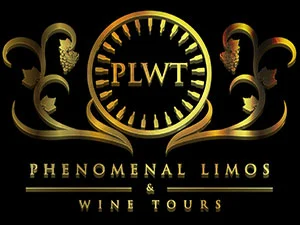
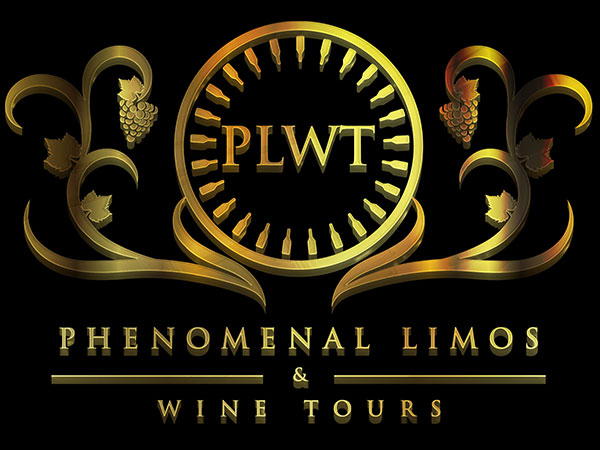
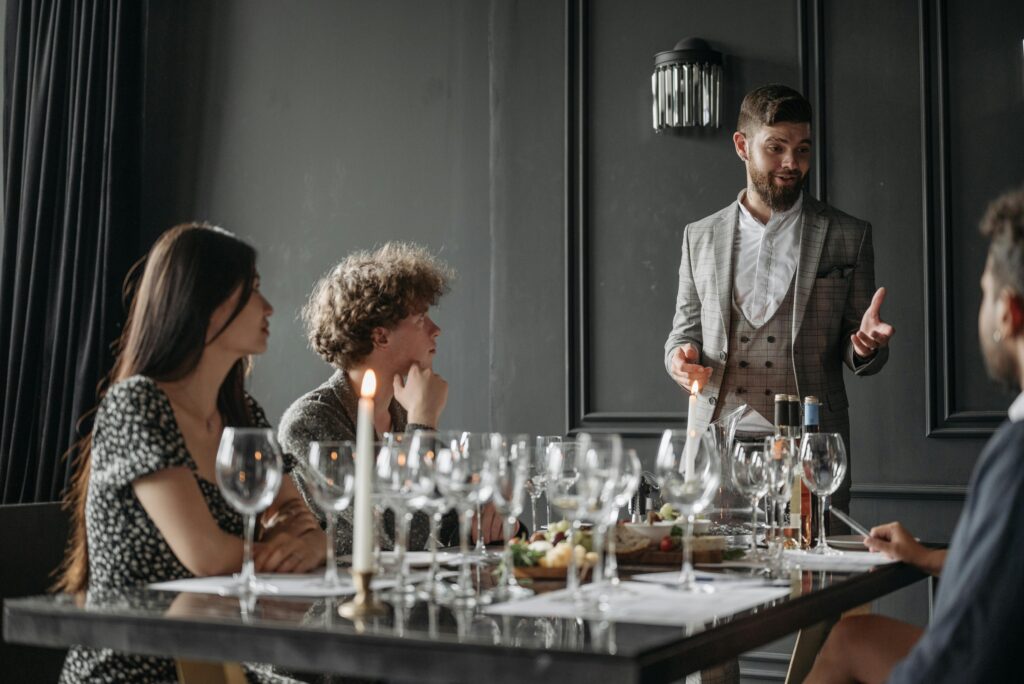
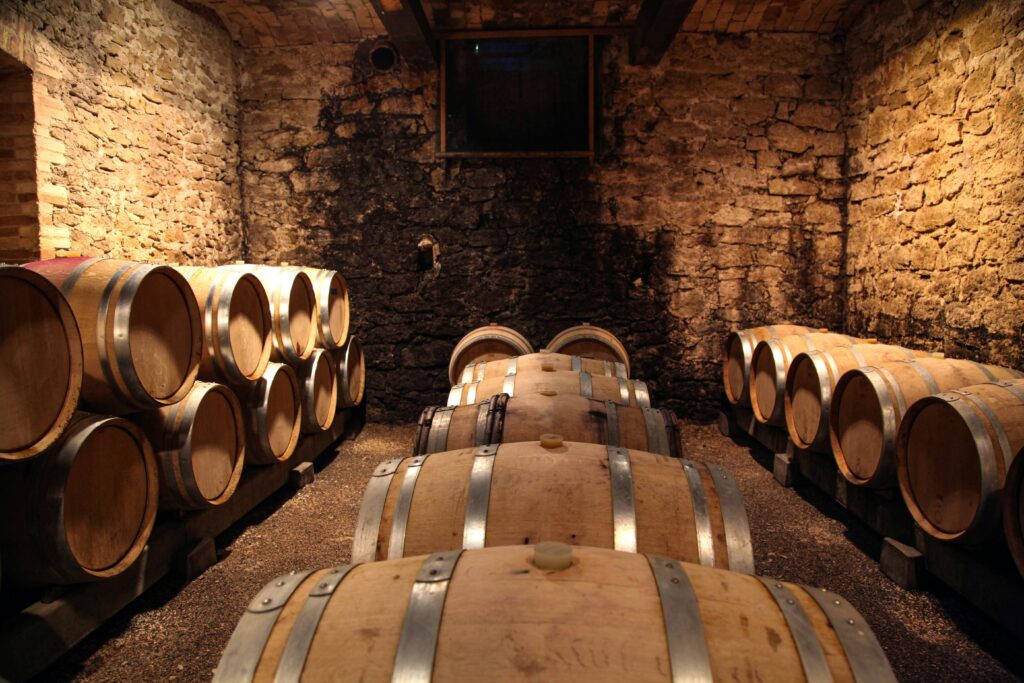
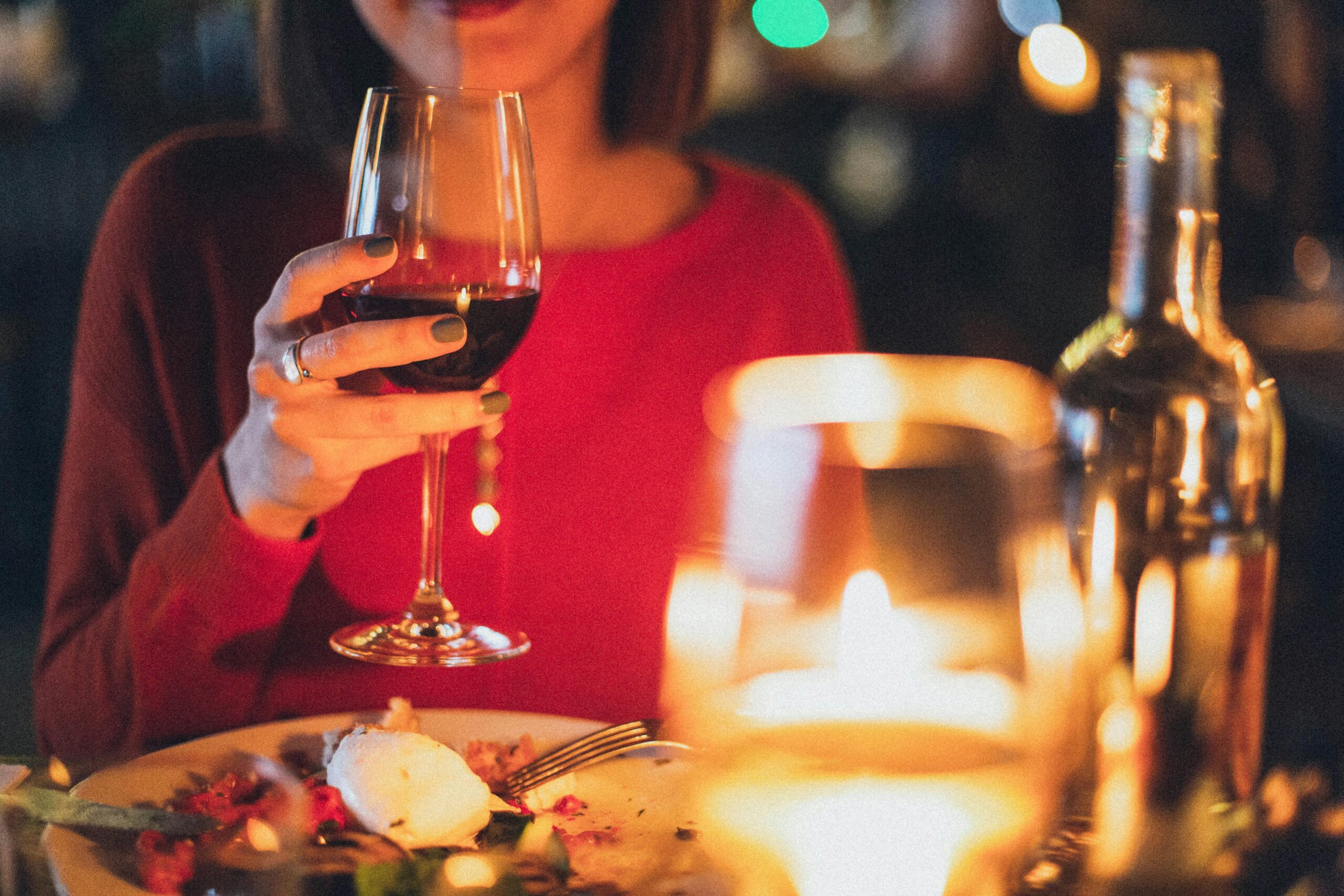 Beyond the Basics: Embracing Diverse Tasting Formats
Beyond the Basics: Embracing Diverse Tasting Formats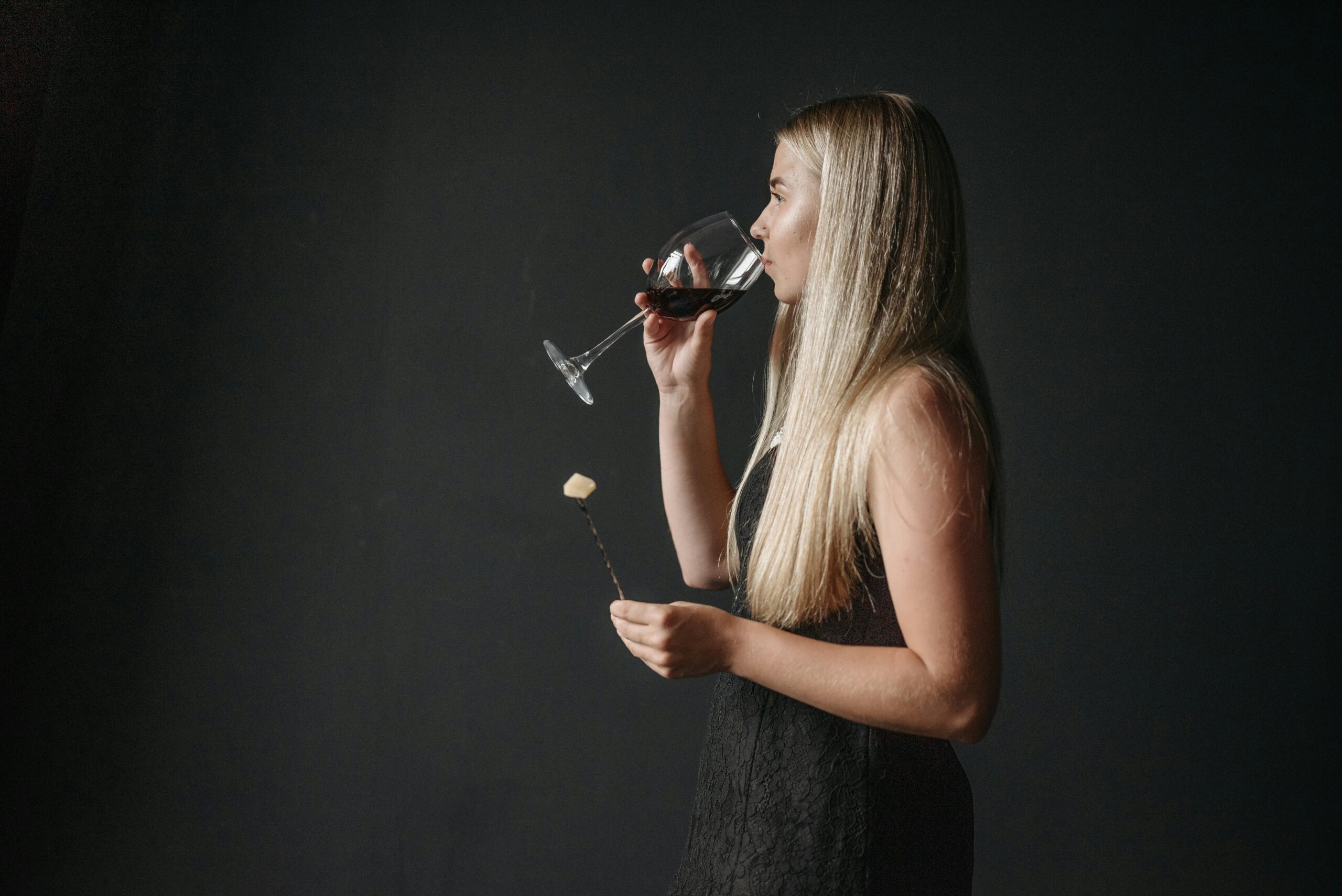 Beyond the Tasting: Making Memories and Expanding Your Knowledge
Beyond the Tasting: Making Memories and Expanding Your Knowledge